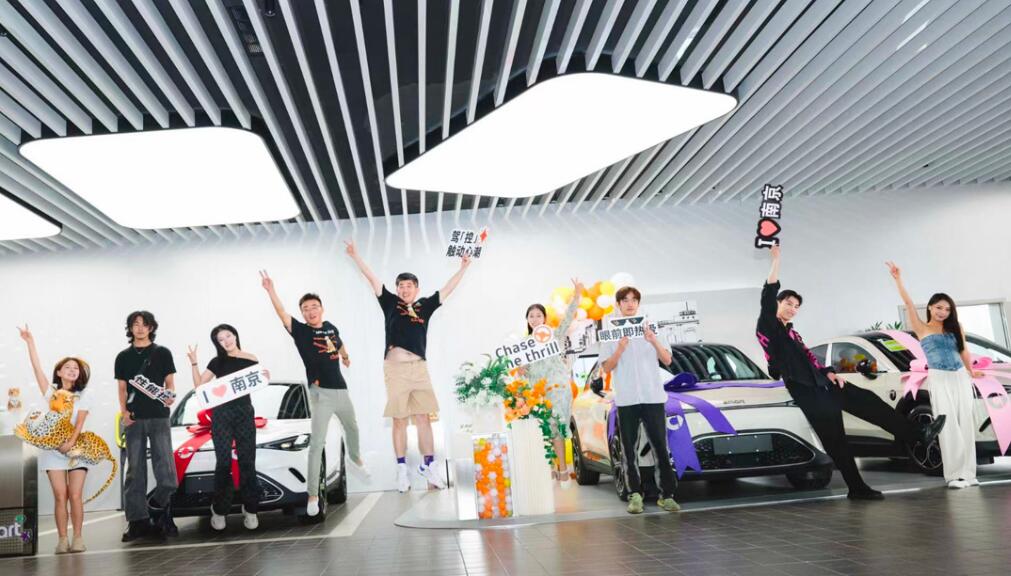For a NEV with a pre-tax price of RMB 300,000, consumers will continue to be exempt from purchase tax from 2024-2025, while they will be subject to RMB 15,000 in purchase tax from 2026-2027.

(Image credit: CnEVPost)
China's Ministry of Finance (MOF) has provided a more detailed explanation of its future purchase tax policy for NEVs (NEVs), after announcing the policy for the next four years last week.
In a Q&A posted on its website today, the MOF provided details on how the NEV purchase tax will be levied over the next four years.
In short, for a NEV with a pre-tax price of RMB 300,000 ($41,600), there will continue to be no purchase tax in 2024-2025, while in 2026-2027 there will be a purchase tax of RMB 15,000.
On June 21, the MOF announced that NEVs with a purchase date between January 1, 2024, and December 31, 2025, will continue to be exempt from vehicle purchase tax. Still, the exemption amount will not exceed RMB 30,000 per vehicle.
For NEVs with a purchase date between January 1, 2026, and December 31, 2027, the vehicle purchase tax will be levied at half the normal rate, with the tax reduction not exceeding RMB 15,000 per vehicle.
When consumers purchase a NEV, if the invoice for the car and the battery are separate, the taxable price is the price of the body before tax.
In today's Q&A, the MOF provided examples of how the NEV purchase tax will be calculated over the next four years:
For the years 2024-2025, NEV purchase tax continues to be exempted, but the tax exemption amount for each vehicle will not exceed RMB 30,000.
For example, Mr. Li purchases a new energy passenger vehicle that meets the tax exemption criteria on February 5, 2024.
If the sales price of the vehicle is RMB 300,000 (excluding VAT, same below), then the normal vehicle purchase tax rate is 10 percent and his tax amount is RMB 30,000 (30 x 10 percent).
According to the tax exemption policy at this time, the amount of tax exemption he can enjoy is RMB 30,000. Since the vehicle does not exceed the RMB 30,000 tax exemption limit, Mr. Li is not required to pay vehicle purchase tax.
For a new energy passenger car with a sales price of RMB 500,000, the normal tax amount is RMB 50,000 (50×10 percent). According to the tax exemption policy, Mr. Li is entitled to a tax exemption of RMB 30,000 and needs to pay vehicle purchase tax of RMB 20,000.
In 2026-2027, the vehicle purchase tax will be reduced by half, while the tax reduction will not exceed RMB 15,000 per vehicle.
For example, on March 1, 2026, Mr. Zhang purchases a new energy passenger car that meets the tax reduction criteria.
If the sales price of the vehicle is RMB 300,000 and the vehicle purchase tax rate is 10 percent, then the normal tax amount is RMB 30,000 (30 x 10 percent).
According to the policy of 50 percent reduction in purchase tax, the tax reduction is RMB 15,000 (3×50 percent). As the vehicle does not exceed the RMB 15,000 tax reduction limit, Mr. Zhang is entitled to a RMB 15,000 tax reduction and is required to pay RMB 15,000 vehicle purchase tax.
If the sales price of the vehicle is RMB 500,000, then the tax payable is RMB 50,000 (50 x 10 percent). Under the 50 percent reduction policy, the tax reduction is RMB 25,000 (5 x 50 percent), which exceeds the RMB 15,000 tax reduction limit.
According to the policy at that time, Mr. Zhang is entitled to RMB 15,000 tax reduction and needs to pay RMB 35,000 vehicle purchase tax.
CnEVPost would like to remind that the prices of the vehicles in the above examples are all prices excluding VAT.
In China, the basic VAT rate is 13 percent. The prices that car companies are showing to consumers are the prices including VAT.
($1 = RMB 7.2119)
The post China's Ministry of Finance explains in detail how consumers will enjoy NEV tax breaks in 2024-2027 appeared first on CnEVPost.
For more articles, please visit CnEVPost.
































